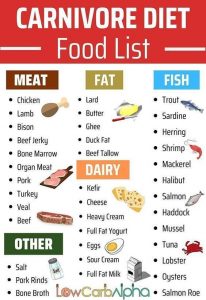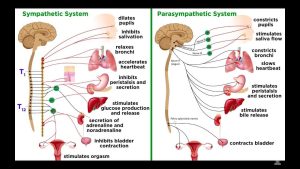- Two main types of amino acids: Essential Amino Acids (EAAs) and Non-Essential Amino Acids.
- Non-Essential Amino Acids: Can be synthesized by the body; not required from dietary sources.
- Essential Amino Acids (EAAs): Cannot be synthesized by the body; must come from dietary protein.
- Non-essential amino acids are made from essential amino acids.
- All EAAs are needed to synthesize proteins; missing even one prevents new protein formation.
- The “limiting” amino acid is the missing or deficient essential amino acid, which limits protein synthesis.
- BCAAs (Branched-Chain Amino Acids), though essential, cannot build new proteins without all EAAs present.
- The body also requires EAAs in specific ratios to each other for optimal protein synthesis.
- Different protein sources (e.g., whey, pea, soy, meat, eggs) contain different ratios of EAAs.
- The body’s ability to synthesize protein is limited by the essential amino acid that is least available in the required ratio.
What is Perfect Aminos from BodyHealth?
- Perfect Aminos is a supplement by BodyHealth that contains a blend of all 8 essential amino acids (EAAs) required for efficient protein synthesis.
- The product is designed to provide a balanced ratio of EAAs to help the body build and repair muscle, improve endurance, and promote recovery.
- Unlike many protein supplements, Perfect Aminos claim to have 99% bioavailability, meaning the amino acids are efficiently used by the body for protein synthesis without producing excess waste.
Suggested Dose to Stimulate MPS:
- The recommended dosage for Perfect Aminos is typically 5-10 grams of essential amino acids per serving to stimulate muscle protein synthesis, particularly for athletes or those engaging in resistance training.
- For optimal results, it’s suggested to take around 10 grams pre- or post-workout, or as advised by a healthcare provider based on individual needs.

How much new protein your body can synthesize from the EAAs in a specific protein source comes down to how much of each essential amino acid exists in the correct ratio within that protein source. (6)
- “The nutritional quality of a food protein depends on the absolute content of essential amino acids, the relative proportions of essential amino acids, and their ratios to nonessential amino acids.” (16)
- If a protein source, such as whey, consists of only 18% EAAs in the correct ratio to make new protein, with the other 82% being individual EAAs in excess of the correct ratio, or of other non-essential amino acids, then only 18% of the whey you are consuming can be used inside the body to make new protein.
- The other 82% of the protein (essential and non-essential amino acids) is excess, and therefore cannot be used to make new protein on its own.
- And this is where calories come in.
- Because this excess isn’t stored or saved for later, and your body has to do something with it.
GLUCONEOGENESIS: HOW PROTEIN IS CONVERTED TO ENERGY (CALORIES)
- Excess carbohydrates are stored as glycogen in muscles and the liver.
- Glycogen is broken down into sugar when energy is needed.
- If glycogen stores are full, excess sugar is converted into triglycerides and stored as fat.
- Excess dietary fat is also stored as body fat if not used for energy.
- The body cannot store amino acids from proteins.
- Excess amino acids are either:
- Broken down into glucose or ketones for energy,
- Converted into fat via lipogenesis, or
- Directly oxidized as fuel.
- Protein calories are only released when excess amino acids are broken down, not when they are used to build new muscle or proteins.
Conditions Caused by Protein Deficiency:
- Weakened Immune System:
- Lack of protein limits the body’s ability to build new immune cells.
- Leads to increased susceptibility to illness and infections.
- Longer recovery times due to insufficient immune response.
- Hormonal Imbalances:
- Protein deficiency affects hormone production (thyroid, adrenaline, cortisol, estrogen, progesterone, testosterone).
- Results in various issues such as osteoporosis, mood swings, increased body fat, lower muscle mass, and energy fluctuations.
- Chain reactions between hormones can create different symptoms for different people.
- Muscle Loss:
- Insufficient protein intake prevents muscle maintenance and growth.
- Leads to reduced muscle mass over time.
- Skin Aging:
- Lack of protein and collagen production results in drier, more wrinkled skin.
- Collagen, a protein necessary for skin elasticity, is affected.
- Bone Health:
- Protein deficiency prevents the healing of microscopic fractures in bones.
- Leads to bone weakness and increased risk of brittleness over time.
- Digestive Issues:
- Insufficient protein results in lower stomach acid and enzyme production.
- Affects digestion and the body’s ability to fully break down and absorb proteins.
- Accelerated Aging:
- Aging combined with protein deficiency reduces digestive juice production.
- This limits the absorption of essential amino acids, contributing to muscle loss and osteoporosis.
Proteins, PerfectAmino, & Our Kidneys:
- PerfectAmino Absorption:
- Provides essential amino acids (EAAs) already broken down for immediate use.
- Efficient absorption even if digestive tract isn’t optimal.
- Increased Protein Synthesis:
- 4 servings of PerfectAmino may build more protein than other dietary sources combined.
- Noticeable improvements in energy, recovery, and muscle building.
- Low Calorie, High Efficiency:
- PerfectAmino delivers protein without the extra calories found in traditional sources.
- Some claim excess protein is toxic due to nitrogen waste.
- Nitrogen and Kidney Health:
- Unused amino acids are broken down, releasing nitrogen that kidneys must process.
- PerfectAmino results in almost no nitrogen waste, minimizing kidney strain.
- Other protein sources (e.g., eggs, whey, pea protein) release more nitrogen waste, increasing kidney load.
- BCAAs, which lack all EAAs, generate nearly 100% nitrogen waste.
- Impact of Low-Utilization Proteins:
- Lower quality proteins result in more nitrogen waste and fewer usable amino acids.
- High nitrogen waste can overwhelm kidneys, leading to potential issues, especially for bodybuilders consuming large amounts of poor-quality proteins.
- Benefits of PerfectAmino:
- Provides the exact ratio of EAAs, fully absorbed regardless of digestive health.
- Supports faster recovery, lean muscle growth, stronger bones, smoother skin, and improved hair health.
- Enhances energy, mood, and hormonal balance.
- Unique Results:
- Effects vary depending on an individual’s protein deficiency.
- Results can include tendon healing, relief from dry eyes, and more.
- No Harm from Increased Intake:
- Conclusion:
- PerfectAmino is a highly efficient protein source that minimizes nitrogen waste and supports overall health.
Side not on the critical role of digestion, particularly concerning protein, in overall health, muscle building, and fat loss.
https://bodyhealth.com/blogs/news/why-proper-protein-digestion-is-so-important
Digestive Health and Its Impact
- Protein Digestion and Absorption:
- The efficiency of our digestive tract in breaking down protein directly influences our body’s ability to build muscle and lose fat.
- If protein isn’t digested properly, we miss out on essential amino acids, which are vital for muscle repair, hormone regulation, and overall health.
- Energy Levels and Hormones:
- Poor digestion can lead to energy deficits and hormone imbalances.
- For example, undigested protein can trigger an immune response, increasing cortisol levels.
- Elevated cortisol can hinder fat loss and promote muscle breakdown.
- Inflammatory Responses:
- Inadequate digestion can lead to inflammation and conditions like Leaky Gut, where the intestinal lining becomes permeable.
- This allows undigested food particles and toxins to enter the bloodstream, potentially triggering immune responses that confuse the body into attacking its own cells.
- Nutrient Utilization:
- When protein is not fully digested, the body receives fewer usable nutrients.
- This inefficiency leads to wasted food intake, contributing to deficiencies that can impact muscle growth, hormone balance, and overall energy.
- Impact of Processed Foods:
- The modern diet, often high in processed foods and sugars, can compromise digestive health.
- This may result in digestive issues like heartburn, bloating, and irritable bowel syndrome (IBS), as well as create an environment conducive to harmful bacteria and parasites.
The Importance of Essential Amino Acids
- Essential Amino Acids (EAAs): These are the building blocks of protein that the body cannot produce on its own.
- Proper digestion ensures that we obtain enough EAAs, which are crucial for muscle synthesis, hormone production, and cellular repair.
Optimizing Digestion
To maintain optimal digestion and support overall health, consider these strategies:
- Dietary Adjustments: Focus on whole, minimally processed foods, and prioritize high-quality protein sources.
- Digestive Health Support: Incorporate digestive enzymes or probiotics to aid in breaking down food and promoting gut health.
- Mindful Eating: Chew food thoroughly and eat slowly to enhance digestion.
- Hydration: Stay well-hydrated, as water plays a role in digestion and nutrient absorption.
- Stress Management: Stress can negatively impact digestion, so practices like mindfulness, meditation, or regular physical activity can be beneficial.
By understanding and addressing the importance of digestion, especially regarding protein, you can improve your body’s ability to build muscle, manage weight, and support overall health.
HOW WE KNOW HOW MUCH OF A PROTEIN SOURCE IS USED VS HOW MUCH IS CONVERTED TO ENERGY (CALORIES)
The key elements of an amino acid are carbon, hydrogen, oxygen and nitrogen.
“Amino acid decomposition results in hydrocarbons and nitrogenous waste.
However, high concentrations of nitrogen are toxic, as they produce ammonium ions.
The Urea Cycle and Amino Acid Processing
- Nitrogen and Amino Acids:
- Nitrogen is a key component of amino acids.
- Released during deamination, which is measurable through urine, feces, and sweat.
- Enables precise measurement of amino acid utilization in the body.
- Anabolic vs. Catabolic Pathways:
- Anabolic Pathway: Amino acids used for protein synthesis; no nitrogen is released.
- Catabolic Pathway: Excess amino acids are broken down (deaminated), releasing nitrogen.
- Measuring Nitrogen:
- Molecular weight of an amino acid: 110 Da; nitrogen makes up 16%.
- Total nitrogen in protein can be measured before consumption, allowing comparison with nitrogen output after.
- Nitrogen Output Measurement:
- If nitrogen is released, it indicates amino acids were catabolized for energy.
- If no nitrogen is released, amino acids were anabolized into new proteins.
- Protein and Glucose Conversion:
- From 100 g of ingested protein, 50–80 g of glucose can be derived.
- Example: 10 g of protein contains 1.6 g of nitrogen (16%).
- If 0.8 g of nitrogen is released, 5 g of protein were used for synthesis and 5 g converted to energy (20 calories).
- PerfectAmino Advantages:
- Near-zero excess: 0.04 calories per serving of 5 g.
- Multiple studies confirm the precise ratio of essential amino acids needed for protein synthesis.
- Comparative Analysis of Protein Sources:
- Whole Hen Eggs:
- 48% of EAAs in the correct ratio for synthesis; 52% are excess.
- Effective caloric measurement: 2.08 calories per gram.
- Whey Protein:
- 18% of EAAs are in the correct ratio; 82% are excess.
- Effective caloric measurement: 3.28 calories per gram.
- BCAAs:
- Consist of three essential amino acids; fully excess and subject to deamination.
- Whole Hen Eggs:
“An extensive search of the literature has revealed no studies in human subjects in which the response of muscle protein synthesis to orally-ingested BCAAs alone was quantified, and only two studies in which the effect of intravenously infused BCAAs alone was assessed. Both of these intravenous infusion studies found that BCAAs decreased muscle protein synthesis as well as protein breakdown, meaning a decrease in muscle protein turnover. The catabolic state in which the rate of muscle protein breakdown exceeded the rate of muscle protein synthesis persisted during BCAA infusion.” (10) -https://bodyhealth.com/blogs/news/the-science-behind-perfectamino-amino-acid-utilization
Understanding Perfect Amino Acids and Muscle Protein Synthesis
Here’s a concise summary of key points regarding Perfect Aminos and muscle protein synthesis (MPS):
- Protein Quality Varies: Not all proteins provide the same amount of usable protein. For example, 1 gram of whey protein is not equivalent to 1 gram of protein from whole eggs in terms of MPS.
- Caloric Misconceptions: The idea that all proteins yield 4 calories per gram is misleading. Calories measure energy from macronutrients, but proteins have varied effects on energy production based on their source.
- Energy Production: When proteins are consumed, they are broken down into amino acids. Only some are used for energy; the rest are used to build new proteins, which do not produce calories.
- Essential vs. Non-Essential Amino Acids:
- Essential Amino Acids (EAAs): Must be obtained from food; necessary for synthesizing all proteins.
- Non-Essential Amino Acids: Can be synthesized by the body using EAAs.
- Limiting Amino Acids: If even one essential amino acid is missing, protein synthesis is limited. The body cannot build proteins without the right ratios of EAAs.
- Amino Acid Digestion: Proteins are fully broken down into free amino acids before being utilized. They do not retain their original protein form in the body.
- Caloric Content of Amino Acids: Perfect Aminos provide pure EAAs with minimal caloric content—less than one calorie for every five grams. This contrasts with traditional protein sources, which may yield more calories due to excess amino acids.
- Gluconeogenesis: Excess amino acids that aren’t used for protein synthesis can be converted to glucose or ketones for energy.
- Nitrogen Measurement: The nitrogen released during amino acid breakdown helps determine how much of the protein is used for energy vs. protein synthesis.
- Comparative Efficiency of Protein Sources:
- Whole Eggs: 48% of EAAs are usable for protein synthesis, yielding about 2.08 calories per gram.
- Whey Protein: Only 18% of EAAs are usable, resulting in about 3.28 calories per gram.
- BCAAs: Composed of three EAAs, they cannot independently stimulate MPS, leading to excess that must be deaminated.
Perfect Aminos offer a highly efficient source of essential amino acids that maximizes muscle protein synthesis while minimizing caloric intake. Understanding the role of amino acids and the quality of protein sources is crucial for optimizing your nutrition and fitness goals.


 What is Anabolic Resistance?
What is Anabolic Resistance? 







